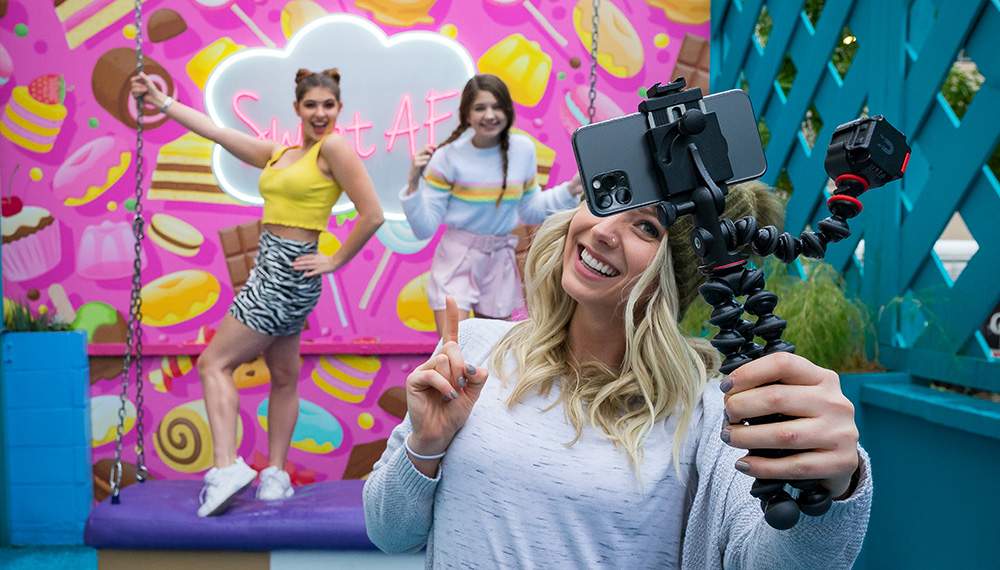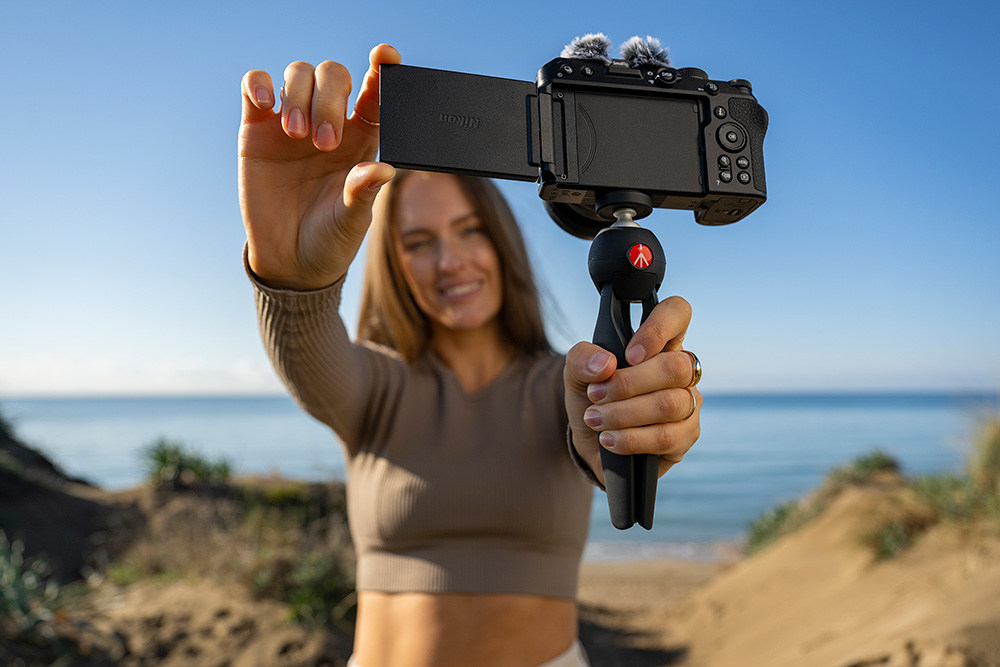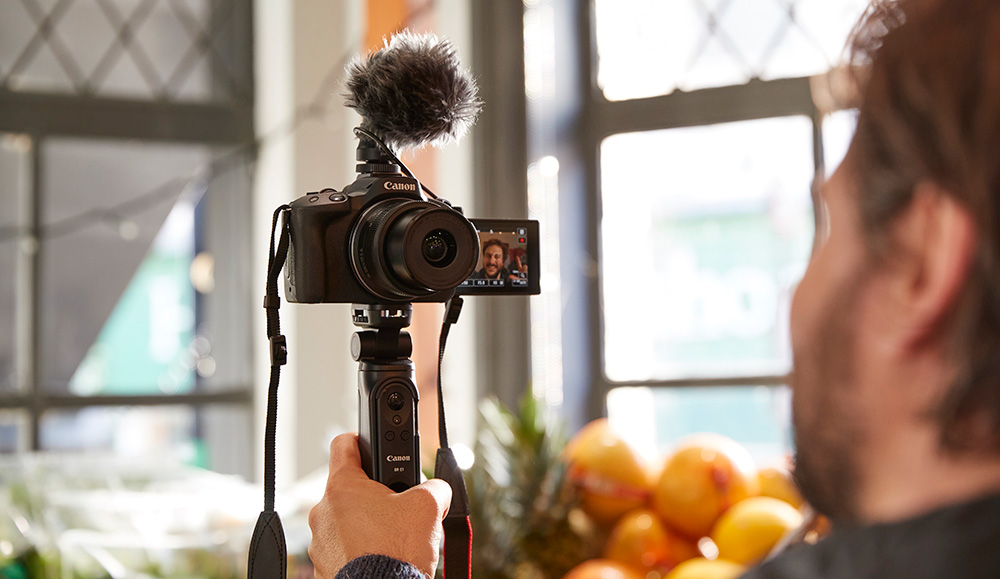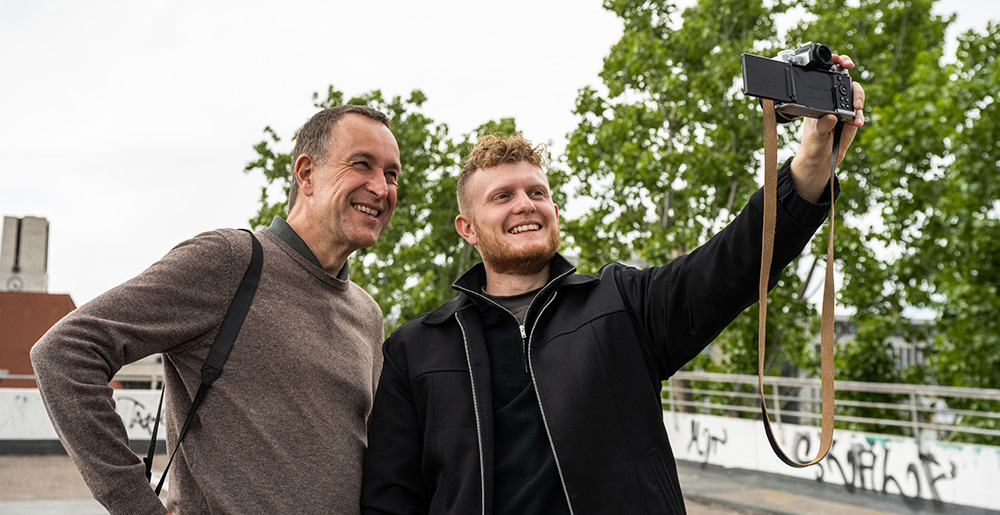- Call us: 01444 237070
- Contact Us
- Stores
- Sign In / Register
-
- Back
- Used Cameras
- Used Lenses
- Used Video
- Used Film Equipment
- Used Stock Alert
- Used Accessories
- Recently Added Used Equipment
- Used Clearance
- Faulty
- Park Picks
- Sell or Part Exchange
- Trade-In
- Blog
- New in
- Call us
- Contact us
- Stores
- Sign in
- Categories
- Tips & Inspiration
- Reviews
- News
- Events
- Features
- Buying Guides
- Competitions
How to Take the Best Selfies
Selfies are arguably the most viral photographic phenomenon in recent times. Not only are they incredibly appealing due to how easy they are to take, but they also give you an awful lot of control over how you present yourself and provide others with a unique insight into your life. Whether you’re taking them in a group or on your own, there’s no doubt that a selfie is one of the best ways of broadcasting your life to the world. This guide gives you pointers on how to take the best selfies, regardless of which camera, lighting and camera accessories you have.

How to get good selfie lighting
A good photo, selfie or otherwise, always requires good lighting. Photos taken in natural light usually look smoother and easier on the eye, and many different effects can be created simply by experimenting with light.
Using a source of even light can create a soft look which often makes for an appealing selfie. This can be done by facing a natural light source – while direct sunlight can sometimes cast unwanted shadows, softer light (like the kind you get at sunset or on an overcast day) can result in more flattering shots.
You can also achieve this artificially by using an LED light attachment on the top of your camera. Ring lights are also incredibly popular right now, as they help to mimic the effect of direct natural light, and often they allow you to alter the intensity to change the softness of the light. Some of these can be attached to your smartphone – for instance, the ShiftCam SnapLight attaches magnetically to the back of your phone, while the Nanlite Halo 14 Inch LED Ring Light can be mounted onto a desk or compact light stand.

Selfie composition
A well-composed shot can be hugely impactful when taking a self portrait. Making yourself the clear focal point of the image is the first step – it could be tempting to use compositional rules like the rule of thirds, but with a selfie, it’s best to be right in the centre, at the forefront of the image. Avoid a distracting background – it shouldn’t divert attention away from you, so make sure your background complements your selfie and doesn’t take away from it.
Holding the camera too close to your face is almost always a bad idea. Holding the camera too close tends to distort your face due to the wide angle of the lens, especially on smartphone cameras. This makes your face look bigger and rounder, and much less natural. As a rule, holding your phone at arm’s length should make your selfies more precise, just like when you’re vlogging.
It’s good to use dynamic angles as well. Taking a selfie from a straight, head-on angle can completely kill the impact of the photo, so experiment to find what angle brings out your best features. Going from a high-angle to a low-angle shot can drastically change the feel of your photo, so find what works best for you to create the most flattering portrait of oneself.

Best selfie equipment
Tripods can be immensely useful for taking selfies – they allow you to consider your composition much more deeply and explore different perspectives when paired with a remote control shutter. Some of the most versatile options right now come from JOBY; their entire range has flexible legs, so users can employ their JOBY mini tripod as a conventional tripod or bend the legs around any kind of suitable support. For smartphones, the JOBY GorillaPod 325 will work wonders, but anything with a payload higher than 325g should be used with the GorillaPod 1K or greater.
JOBY also offers dedicated selfie stick tripods – the Telepod 325 works brilliantly for small cameras and smartphones, and folds away neatly. All JOBY tripods can be paired with the Manfrotto MCLAMP to attach your smartphone. Insta360 also offers a 114cm Invisible Selfie Stick that is intelligently edited out from your photos when using an Insta360 camera such as the X3 Action Camera.
ShiftCam, a brand recently born out of the selfie phenomenon, has all the tools you’ll need for taking stunning selfies. Their gadgets magnetically snap to the back of your phone, so they work with minimal setup – something selfie-takers will love due to their ease of use.
For lighting, they offer the SnapLight, a magnetic ring light that can be used with the front and back-facing cameras. The light also contains a built-in mirror to help with your selfies, especially if you’re using your camera’s back-facing camera to fit more into your shot. They also sell the SnapPod, a tripod that converts into a selfie stick, a staple of viral technology from the early 2010s which is still super helpful today. If you want all of what they have to offer, the SnapGrip Creator Kit comes with both of these and an additional SnapGrip that attempts to replicate a DSLR shooting experience with your smartphone.

The best cameras for selfies
Compact cameras are arguably the best choice for anyone looking to upgrade their selfie experience from a smartphone. While there are times when a smartphone may be convenient, a stand-alone camera will always produce better image quality, capturing vivid colours and crisp detail that your smartphone camera is more likely to miss out on. Along with this, compact cameras handle a shallow depth of field much more effectively, putting you centre-stage.
The Panasonic Lumix TZ90 is a complete compact camera - with a flip-up screen, taking selfies on this camera is a breeze. This camera incorporates incredible features like 4K video and a 30x zoom optical lens from Leica too. Not only this, it comes with selfie-friendly functions built in, like face smoothing, intuitive aperture control, and even a Buddy Shutter option that captures an image as soon as you and a friend bring your faces together – quite the overwhelming selection!
The Canon PowerShot G7X III is a more advanced choice for supreme results. The camera has a 20.1MP sensor and is compatible with the Canon Camera Connect app to make sharing your selfies super easy. It also has a minimum aperture of f/1.8, which helps to make you stand out from the background. Their HG-100TBR Tripod Grip was designed to be used with the PowerShot G7X II, which is useful for not only selfies but for video content and more.
The Nikon Z30 is another good choice – as an APS-C camera, it excels in all types of photography, but is designed specifically for creators. Nikon has included a dedicated selfie mode exclusive to this camera that removes clutter from the screen when tilted out, providing a clear frame to get your shot right. Pairing this camera with an ultra-wide zoom lens like the Nikon Z DX 12-28mm F/3.5-5.6 would make for an extravagant solution for taking selfies.
Even action cameras can take great selfies – as mentioned before, the Insta360 X3 is incredibly versatile, and captures outrageous 72MP stills. Insta360 is a brand loved by influencers; their products are oriented towards content for the likes of Instagram and TikTok. It’s also compatible with Insta360’s own invisible selfie stick.

What lens is best for selfies?
If you’re going to turn your selfies into creative self-portraits with an interchangeable lens camera, you’ll need to pick out the best camera lens to accurately capture the look that you’re going for. Combining an interchangeable lens camera with strong optics is a sure-fire way of capturing the highest quality images possible.
If you’re shooting handheld, you’d be better off with a wide-angle lens that captures everything close up. The Canon RF 24mm does this very well – not only does it make shooting easy with optical stabilisation, it has a focus distance of 14cm and a minimum aperture of f/1.8 to effectively blur the background behind you.
Canon’s RF-S 10-18mm is a fantastic ultra-wide lens that’s perfect for social media. The lens is designed specifically for Canon’s typically smaller APS-C cameras, such as the EOS R50 or R100. These entry-level mirrorless interchangeable lens cameras are designed for those looking to upgrade their photography experience from their smartphones, coming with plenty of helpful features.

The latter comes with Face+ Tracking autofocus and a Creative Assist function to avoid the daunting knowhow typically associated with photography. The super wide angle of the RF-S 10-18mm means this camera is perfect for selfies, and can even enable you to branch out into other forms of content creation like vlogging, with image stabilisation built-in.
If you’re looking to go further with your photography, this lens performs brilliantly when capturing broad views for landscape photography, and is super light for maximum portability.
At Park Cameras we stock everything you need for all sorts of photos – selfies are no exception. For brilliant selfies, portrait shots and more, make sure to explore our range of cameras, tripods, lighting accessories and lenses.
Share this post:
By Thom Pyle on 11/11/2023

Trade in your old equipment
Fast and easy trade in service ensures your old gear is collected efficiently and you are paid quickly! It's very simple to trade in your unwanted photography gear. Just head over to our dedicated Sell or Part Exchange page, fill out the details, and we'll get back to you with an offer for your old gear. Take the cash, or put it towards the cost of your new gear. It's up to you! Find out more
sign up to the newsletter
Keep up to date on the latest photography news, events and offers. Sign up now
